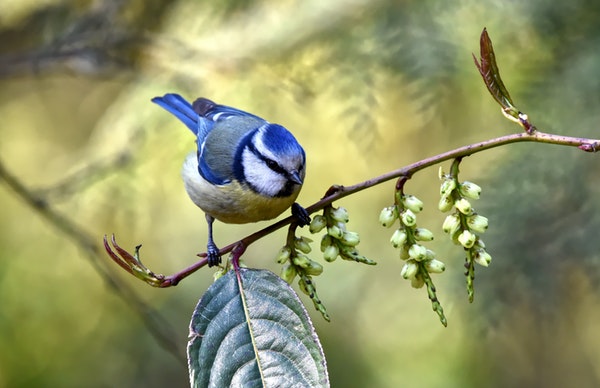Welcome to the world of gardening! Gardening is a rewarding hobby; it also poses many challenges. The biggest problem you’re likely to face as a new gardener is learning how to deal with garden pests. No matter where you are, you’re almost guaranteed garden pests of some kind.
New gardeners often feel dismayed when pests eat their plants. Learning to manage pests requires problem-solving skills as there is no hard-and-fast solution for pests. With practice, though, you can learn to deal with garden pests and develop gardening skills that will help you succeed for years to come.
What Are the Common Garden Pests?
Three Types of Pests
Common garden pests fall into three overall categories:
Insects include aphids, beetles, and mites. They will eat the leaves of many plants. There is an insect, aphid, or beetle for almost every garden plant. Slugs and snails are mollusks. They come out at night in humid areas and after rain. They leave slimy trails on leaves and stone paths around the garden. Butterfly and moth caterpillars are a double-edged sword in the garden: while caterpillars will eat garden plants, butterflies and moths will pollinate plants and flowers.
Mammals that cause problems in the garden are rabbits (which will devour plants) and moles and voles (which will not only eat plants but also disturb the garden with their tunnels). Birds can cause problems in the garden by eating vegetables and fruit before you can harvest it and by digging up the soil for worms.
Good Guys
The most important thing to know about garden pests is that not all animals in your garden are pests! As mentioned, butterflies and moths pollenize plants. Bees do the same. Ladybugs and spiders eat aphids and other insects. Worms keep the soil healthy. Birds remove harmful insects and slugs from leaves.
Before you remove or kill insects or other creatures in your garden, do a quick Google search to identify the creature. Don’t kill off a caterpillar that will grow into a rare butterfly or insects that will help prevent true pests from taking over your garden.
What Kind of Damage Can They Do to Your Garden?
Insects, Slugs, and Caterpillars
Mammals and Birds
How to Get Rid of Common Garden Pests
Be Proactive
Before you plant your garden, plan for the inevitable. Get started early with some proactive strategies to nip garden pests in the bud (so to speak)!
When designing your garden, choose chrysanthemums. A relative of the daisy, this plant contains a substance called pyrethrum. This substance has been used as a bug repellant for centuries.
Plant chrysanthemums evenly throughout your garden. If possible, space chrysanthemums between every two or three plants. At a minimum, plant a chrysanthemum at each end of your garden and one in the center. The more, the better! These are a natural pest repellant and will help keep the number of pests down from as the get-go.
Besides planting chrysanthemums, design your garden, so it’s easy to keep “clean.” Make rows of vegetables wide enough for you to move through with ease. Parts of your garden under trees will regularly need to be cleared of leaves; full leaves will provide places for slugs to hide. If you have a lot of leaf litter in your yard, design a compost pile in which to deposit leaves. Distribute the compost after the leaves have broken down.
If possible, plant your garden, so it has an open space around it. Rabbits are not comfortable in wide-open spaces; bushes near a garden allow them to hide close to a food supply. An open, sunny space won’t be at the top of a rabbit’s list.
Killing Insects, Slugs, and Caterpillars
Image via Pexels
The first tool to try when dealing with insects and other crawlies in your garden is soap spray. This spray is easy to make and protects your garden from many garden pests.
To make a soap spray, you’ll need:
Mix these ingredients in the bottle and shake thoroughly. Spray lightly over your plants. The oils in the soap spray break down membranes in many insects, slugs, and caterpillars’ bodies, suffocating them. Soap spray is a great way to deal with garden pests without using damaging insecticides.
After soap spray, an excellent way to conquer these types of garden pests is to attract them, trap them, and remove them from your garden. Certain scents attract beetles. After googling to identify the kind of beetle in your yard, look up the specific kinds of scents that will lure your beetle to your trap.
Many beetles like geraniums and fruit cocktail. Plant or leave out some geraniums or dishes of fruit cocktail and collect the beetles from the plants the next morning. Slugs can be attracted and removed this way with a shallow dish of beer.
If the soap spray and attract-and-remove methods don’t work, there are more specialized options to try. If slugs are a challenge, sprinkle diatomaceous earth around your garden. This product will harm slugs when they slide over it, killing them before they can reach your plants.
If caterpillars are the problem, purchase protective cloth to keep them off your plants. Oil from the neem plant (an evergreen found in Asia) can be used to make an all-natural, yet powerful, spray to prevent beetles and aphids. To make a spray, follow the directions on your neem oil bottle.
If money is no object, there's a creative solution for dealing with insects and other harmful crawlies: moving their predators into your garden! Praying mantises, ladybugs, and other predatory insects can be ordered online and shipped to your home for release in the garden.
Kicking Out Mammals and Birds
In the United States, it’s illegal to kill most birds, and few people relish killing furry creatures, even if they are destroying the garden. The way to deal with these animals involves getting them out of the garden and then making sure the garden is not hospitable to their return.
Try dropping grated garlic or chili peppers in mole and vole tunnels and around the garden soil. Select humane Havaheart traps to trap and remove animals from your garden (release them in a park or wooded area). While yellow balloon “eyes” and fake owls for are commonly thought to scare birds away, many gardeners find Mylar ribbon quite effective.
After destructive birds and mammals have left your yard, work on preventing their return. Use chicken wire to protect individual plants from rabbits or create a four-foot high fence around the entire garden to keep them out altogether. Use netting designed to protect gardens from birds. Authentic, strong-smelling castor oil is the old-fashioned way to get moles and voles out of your yard. Since few drugstores still sell un-deodorized castor oil, visit a garden supply store or look online for natural castor oil treatments designed for moles and voles.
Conclusion
Photo by bruce mars from Pexels
There is no simple strategy for getting rid of garden pests. You may have the same pests return year after year, or you may have new pests each year. If you’re new to gardening, don’t let garden pests keep you from enjoying this rewarding hobby. Facing the garden pest challenge is part of the gardening experience. Think of it as a puzzle to solve; when you find the solution, you’ll want to tell everyone about your victory!





Leave a Reply